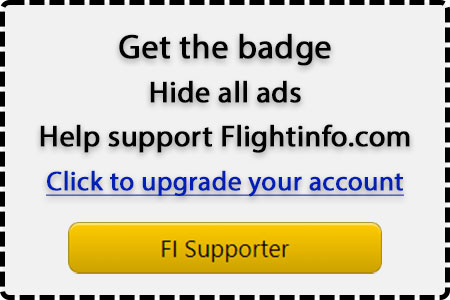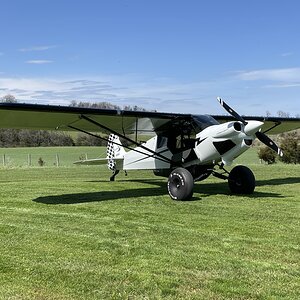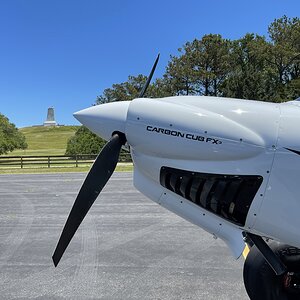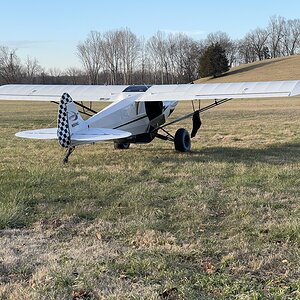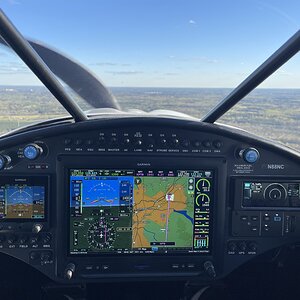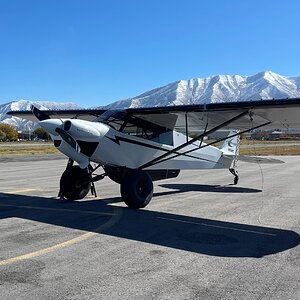I doubt it. It's safer to have your head up and be paying attention than buried in a checklist. I know it's different with 2 pilots, but by myself I use flows.
You're kicking against the pricks on that one (and I don't mean that literally)...the free and the captive world both believe from bloody years of experience that checklists are not only darn good idea, but crucial to your future health.
My perspective and practice is that flows apply in all phases of operation, when supported with a checklist. I take my checklist very seriously. In the past few years, a couple of experiences drove that home to me. One occured a few several years ago when I took a contract flight in a King Air 200 one night for an ambulance company. I'd made night approaches into this remote, uncontrolled field on a number of occasions, and flew the standard VOR approach for terrain and self-preservation. I had always dropped the gear at the VOR, which served as the FAF for the approach. For some reason I did not. I relied on my flows, and somewhere in there either in the turbulence or something else, got my attention diverted somewhere other than the crucial task of flying the airplane. I found myself on final and caught the gear...far later than I should have because I didn't execute the checklist at the time I should have. I normally used it religiously, and I can't tell you why I failed to do it then...but it could have been very serious for me, my crew that night, and for the patient who was waiting for us.
The second occurance was this last summer, on a day when I was doing a lot of fast turnarounds. That particular aircraft often involved locking the controls as we were rolling out or clearing the runway, as a matter of habit. We were very flow oriented in the airplane; it was a single seat single pilot cockpit with a lot going on, low level hot and heavy flight in moderate to severe turbulence, and it was a very unstable airplane. I'd attended to that by ensuring the checklist was as concise as possible and on my kneeboard in jepp protectors where I could review it hands-off. I hot-loaded, made the short taxi to the runway, lined up, called my time, and rolled.
The tail didn't get light, so I pushed, and pushed, and nothing happened. I glanced down and noted that the control lock was neatly in place, preserving the very large control surfaces from wind damage on the ground just as they were intended to do, and preventing me from using them as they were not...an upward swipe with my fist knocked it free, otherwise it would have been an abort in a situation that wasn't really abortable for a number of reasons. Sheer stupidity. Something like the tenth or twelth of eighteen takeoffs that day, a long day...I ran into some folks a month later who had whitnessed a pilot takeoff in that condition in the same type aircraft a year before...he got to nearly 300' before pitching over and down into the ground at a steep angle, and from what I understand, a fireball.
Checklists are there for a reason. Use them. The military believes this. Airlines believe this. All flight training departmets believe this. Corporate departments know this. Professional pilots live and breath it. I've practiced it in every kind of flying I've done, which has been a fairly diverse lot...and the times I haven't, such as outlined here, it's bitten me (or nearly so). Don't reinvent the wheel...don't think you know more than the rest of the flying world and thus go your own way. You don't. It's a mistake, it's a bad habit, and it will kill you.
When I'm single pilot, I read the checklist out loud, the whole thing, after my flows, and I do it verbally with a full challenge and response...you fight how you train, and I train to do it the same weather I'm alone or in a crewed cockpit...and that consistency is a good thing. You do as you will, but I don't think you'll find a credible source out there that will back your idea of using flows instead of checklists, nor your justification that this is okay because it's single pilot. It's not okay. It's dangerous.
You're dangerous, iceman (had to throw that in there. Sorry. It just came out). (Really).
As far as checklists go, I don't think it's too critical either way with capitol lettering. I like to see items clearly printed so they're not mixed or mistaken, with phases of the checklist separated and clearly labled. I like to see the checklists organized into the same flow pattern that's used before, during, or after the checklist to unify the actions. A good, easily useable checklist can contribute a whole lot to safety, but one that's hard to follow is less likely to be used, and as a result throws the pilot or crew into the same boat as the fellow above who doesn't like to use his checklist. Not good.
So long as I'm on the box (so to speak), I've seen a real potential for skipping items because line items on the checklist appear the same. Making the lines a little unique so they can be visually identified and tracked, such as making alternating items down the list bold, or with a highlighted background sometimes helps. A lot of ways can be found to do this...just something that give the eye structure as it goes down the list and doesn't contribute to getting items skipped. It's a good support to keeping one's finger on the item being done on the checklist.
As you can probably tell from the questions asked, we have a small debate going on here regarding new checklist design and contruction. Actually NASA has some material that gives guidance, but then NASA also says you shouldn't fly when your tired and we all know how well that rule is followed.
Ah, not sure what your point is there...but NASA IS RIGHT!!! (as is every other aviation safety organization in the world which doles out the same counsel...and the FAA that enforces it).
